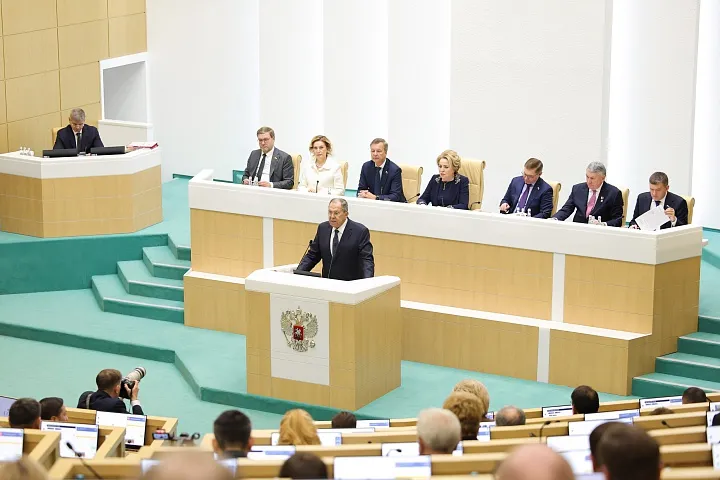Commemorating the 75th anniversary of the 1949 creation of the first Soviet atomic bomb, the RDS-1, at the Atomic Pavilion of the newly renovated Industrial Exhibition Center in Moscow, Russian officials and experts spoke of the coming designs of nuclear energy in the Russian Federation. Greetings were sent to the participants by President Putin, lauding the achievements of Russian science coming out of the destruction of World War II. Sergei Kiriyenko, former head of Russia’s Atomic Energy Agency and now First Deputy Chief of Staff of the Russian Presidential Executive Office, read Putin’s remarks.
Lev Ryabev, who headed the U.S.S.R. Ministry of Medium Machine Building which oversaw the country’s nuclear industry from 1986-1989, presented a history of the development of the atomic project in the U.S.S.R.. Then Sergei Naryshkin, the director of the Russian Foreign Intelligence Service and Chairman of the Russian Historical Society, noted the role of intelligence officers in the domestic atomic project. “By the end of the war,” Naryshkin said, “our intelligence officers had almost complete information about the current state of nuclear projects around the world. Thanks to timely reports, the time it took to create a domestic device with a nuclear charge was significantly reduced.”
While Soviet scientists already had their own blueprint for building a bomb, the information gathered from Intelligence, as well as from open sources in the West, allowed them to find a path to do this more quickly. According to Naryshkin, the creation of the RDS-1 “forced the abandonment by the United States to revise the results of World War II and to establish the rule of force on both sides of the ocean.” (In this light, the recommendation of Bertrand Russell should be kept in mind, that the West should bomb the Soviet Union before they develop their own bomb.)




